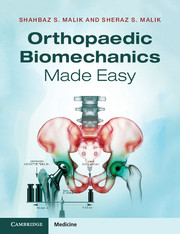(To see other currencies, click on price)
MORE ABOUT THIS BOOK
Main description:
Orthopaedic surgeons require not only an understanding of anatomy and clinical sciences, and competence in surgical skills, but also a strong foundation in biomechanics. The application of biomechanics plays an increasing role in modern orthopaedics; for example, correct decisions about the mode of treatment and choice of implants are just as important as operating precisely to reach a specific anatomical landmark. This book simplifies the core principles in orthopaedic biomechanics, giving readers the solid grounding they need to flourish in the specialty. Each topic is covered in a discrete, double-page spread, featuring concise text accompanied by illustrations or tables to give readers a solid understanding of the concepts discussed. This is a must-read guide for orthopaedic trainees at every level, and will be valuable for biomechanical researchers and other professionals in the field.
Contents:
Preface; Part I. Materials and Their Properties: 1. Introduction to orthopaedic biomechanics; 2. Materials and their properties; Part II. Engineering Theory Applied to Orthopaedics: 3. Modes of loading of the musculoskeletal system; 4. Biomechanics of fracture; 5. Biotribology; Part III. Clinical Biomechanics: 6. Biomechanics of the hip and THR; 7. Biomechanics of the knee and TKR; 8. Biomechanics of the shoulder; 9. Biomechanics of the elbow; 10. Biomechanics of the spine; 11. Biomechanics of the foot and ankle; 12. Biomechanics of fracture fixation; 13. Trauma meeting: case-based discussions; Index.
PRODUCT DETAILS
Publisher: Cambridge University Press
Publication date: May, 2015
Pages: 224
Dimensions: 189.00 x 246.00 x 10.00
Weight: 490g
Availability: Available
Subcategories: Biomechanics, General, Orthopaedics and Fractures

